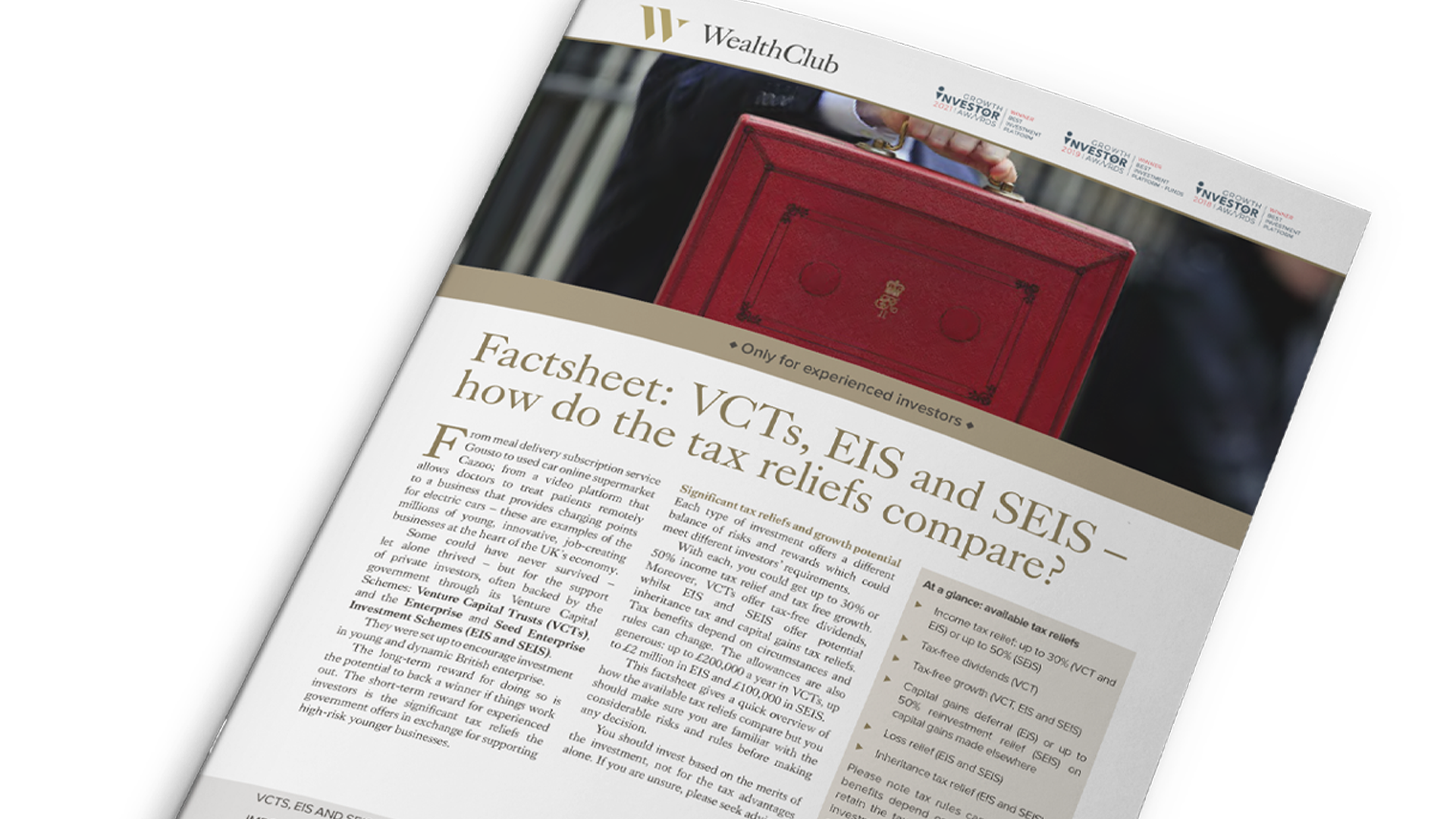Don't invest unless you’re prepared to lose all the money you invest. This is a high-risk investment and you are unlikely to be protected if something goes wrong. Take 2 mins to learn more.
Estimated reading time: 2 min
Due to the potential for losses, the Financial Conduct Authority (FCA) considers this investment to be high risk.
What are the key risks?
- You could lose all the money you invest
- If the business you invest in fails, you are likely to lose 100% of the money you invested. Most start-up businesses fail.
- You are unlikely to be protected if something goes wrong
- Protection from the Financial Services Compensation Scheme (FSCS), in relation to claims against failed regulated firms, does not cover poor investment performance. Try the FSCS investment protection checker here.
- Protection from the Financial Ombudsman Service (FOS) does not cover poor investment performance. If you have a complaint against an FCA-regulated firm, FOS may be able to consider it. Learn more about FOS protection here.
- You won’t get your money back quickly
- Even if the business you invest in is successful, it may take several years to get your money back. You are unlikely to be able to sell your investment early.
- The most likely way to get your money back is if the business is bought by another business or lists its shares on an exchange such as the London Stock Exchange. These events are not common.
- If you are investing in a start-up business, you should not expect to get your money back through dividends. Start-up businesses rarely pay these.
- Don’t put all your eggs in one basket
- Putting all your money into a single business or type of investment for example, is risky. Spreading your money across different investments makes you less dependent on any one to do well.
- A good rule of thumb is not to invest more than 10% of your money in high-risk investments.
- The value of your investment can be reduced
- The percentage of the business that you own will decrease if the business issues more shares. This could mean that the value of your investment reduces, depending on how much the business grows. Most start-up businesses issue multiple rounds of shares.
- These new shares could have additional rights that your shares don’t have, such as the right to receive a fixed dividend, which could further reduce your chances of getting a return on your investment.
If you are interested in learning more about how to protect yourself, visit the FCA’s website here.
The most recent Budget introduced an eye-watering £40 billion of tax rises by 2029/30 – the largest hike in a generation.
Much of that burden is falling on “those with the broadest shoulders”: the ever-growing number of higher- and top-rate taxpayers, caught by tax rises, threshold freezes and allowance cuts.
Against this backdrop, the generous tax reliefs available when investing in British startups through VCT, EIS and SEIS (Venture Capital Trusts and the Enterprise and Seed Enterprise Investment Schemes) may look increasingly attractive to experienced investors comfortable with the significant risks.
If you plan to invest and save tax this tax year (or, in some cases, even claim back tax already paid last year), there is still time. Remember: the end of the tax year is on 5 April, but investment deadlines are earlier.
Important: The information on this website is for experienced investors. It is not a personal recommendation to invest. If you’re unsure, please seek advice. Investments are for the long term. They are high risk and illiquid and can fall as well as rise in value: you could lose all the money you invest
How do VCT, EIS and SEIS tax reliefs compare at a glance?
The below is a brief outline based on current rules: there are detailed conditions and rules you should consider carefully before investing. If unsure, seek advice. These are high-risk investments and you should invest on the merits of the investment, not for the tax advantages alone.
| VCT | EIS | SEIS | |
|---|---|---|---|
| Maximum investment per tax year | £200,000 | £2,000,000* | £200,000 |
| Carry back | no | available | available |
| Income tax relief | up to 30% | up to 30% | up to 50% |
| CGT relief/deferral | no | deferral | up to 50% |
| Tax-free dividends | yes | no | no |
| Tax-free growth | yes | yes | yes |
| IHT relief** | no | yes | yes |
| Loss relief | no | yes | yes |
* Provided anything over £1 million is invested in Knowledge Intensive companies.
** From 6 April 2026 100% IHT relief on EIS and SEIS private companies will be limited to the first £1 million of qualifying assets (including private companies and agricultural property), with the remainder eligible for 50% IHT relief (an effective IHT rate of 20%). Any qualifying S/EIS companies quoted on AIM will be eligible for 50% IHT relief (an effective IHT rate of 20%).
Tax rules can change and benefits depend on circumstances.
How to get back tax you’ve already paid with EIS and SEIS carry back
EIS and SEIS investments offer a “carry back” facility. You can elect for all or part of your EIS/SEIS shares acquired in one tax year to be treated as though they had been acquired the previous tax year.
So, for instance, if you invest in an EIS or SEIS offer that plans to deploy your funds before 5 April 2025, you can use the income tax relief (up to 30% with EIS and up to 50% with SEIS):
- to save on your income tax bill for 2024/25
- to get back tax you’ve already paid for 2023/24
You can only do this if you have sufficient EIS or SEIS allowance in the tax year to which you’re carrying back.
There’s still time to apply EIS and SEIS relief to your 2023/24 income tax bill
Some of the EIS funds, EIS single companies and SEIS funds available on our website are targeting deployment within this tax year – not guaranteed. Tax rules can change and benefits depend on circumstances. Please be aware of the deadlines.
Free factsheet: VCTs, EIS and SEIS tax reliefs compared
This short and simple factsheet explains and compares side-by-side the current tax treatment of these three government-endorsed schemes. Get the free factsheet and find out:
Wealth Club aims to make it easier for experienced investors to find information on – and apply for – investments. You should base your investment decision on the offer documents and ensure you have read and fully understand them before investing. The information on this webpage is a marketing communication. It is not advice or a personal or research recommendation to buy any of the investments mentioned, nor does it include any opinion as to the present or future value or price of these investments. It does not satisfy legal requirements promoting investment research independence and is thus not subject to prohibitions on dealing ahead of its dissemination.




